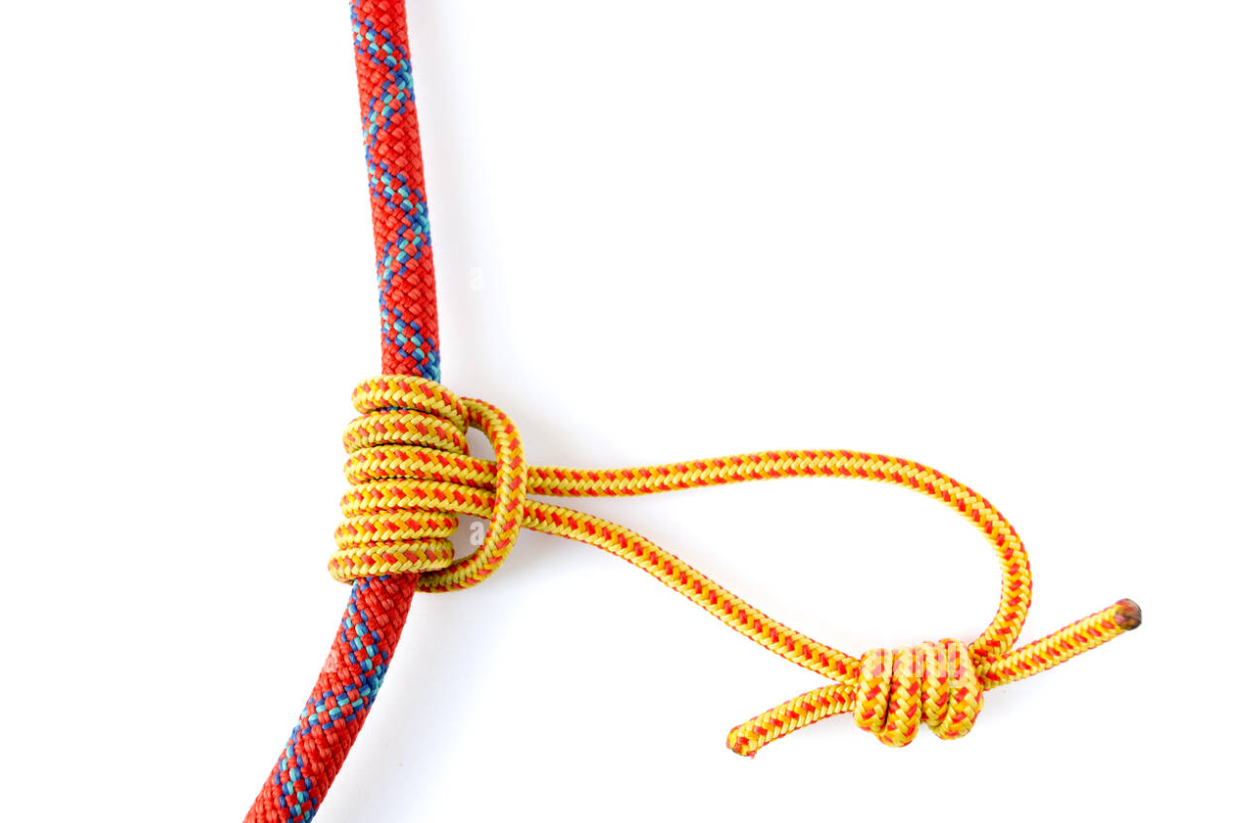The Prusik and French Machard are two types of auto-block knots that grip the rope when strong tension is applied: this allows you to safely rappel down on double ropes, preventing rope burns. You can also use auto-block knots for fixed-line ascents and emergency operations, tying the cord around the rope and securing it to your harness with a carabiner
To tie these knots you can use 6 or 7 mm nylon cords, depending on the thickness of your rope. Generally speaking, you can find the right cord diameter by subtracting 60% from the diameter of your rope. The optimal loop length stands between 40 and 90 cm. It is important to calculate the right length and number of needed wraps to make sure the knot will work properly. If you don’t have a cord, you can also use a webbing up to 14-15 mm wide and preferably in nylon.
The Prusik knot

The Prusik is a bidirectional knot, meaning it blocks when weight is applied both up- and downwards, and it requires a minimum of experience to properly tie it. It can be used for double rope rappels but also fixed-line ascends and emergency operations and in all situations where a wet rope is more difficult to handle. Its locking effect is so tight it may be harder to loosen the knot after bodyweight has been applied to it: for this reason, the Prusik is the safest blocking knot.
The French Machard

The French Machard is both a mono- and bidirectional knot, depending on how you tie it. Its monodirectional version is also known as the Klemheist knot. Just like the Prusik, it is used for double rope rappels with the difference of being easier to slide up and down once tension is applied. This means, however, that, sliding with greater ease, it is not recommended in situations like ice climbing or mountaineering at very low temperatures. Its execution is definitely easier to learn and, compared to Prusik, it is also faster to undo and unlock. It is also faster and easier to tie and untie.
Cover photo credits: Sean Banesh from Unsplash
